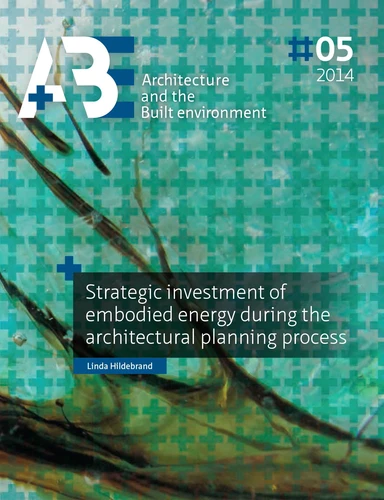Strategic investment of embodied energy during the architectural planning process
Par :Formats :
Disponible dans votre compte client Decitre ou Furet du Nord dès validation de votre commande. Le format Multi-format est :
- Pour les liseuses autres que Vivlio, vous devez utiliser le logiciel Adobe Digital Edition. Non compatible avec la lecture sur les liseuses Kindle, Remarkable et Sony
 , qui est-ce ?
, qui est-ce ?Notre partenaire de plateforme de lecture numérique où vous retrouverez l'ensemble de vos ebooks gratuitement
Pour en savoir plus sur nos ebooks, consultez notre aide en ligne ici
- FormatMulti-format
- ISBN978-94-6186-326-3
- EAN9789461863263
- Date de parution28/06/2014
- Protection num.NC
- Infos supplémentairesMulti-format incluant ePub sans ...
- ÉditeurTU Delft
Résumé
This year's fifth issue of A+BE outlines the relevance of the building substance as factor for the overall sustainable performance of the built environment. It wants to sensibilize the designer for the ecological dimension of planning decisions and to show how to optimize them. Design and construction of buildings include harvesting resources and producing emissions and stating a burden to nature.
This can be perceived equivalent to a financial investment where the monetary value has to express adequately the real one. The planning decision has an ecological value which must justify its relevance by function and has to be optimized within its scope. Environmental impact and desired building quality must be alanced in order to establish a sustainable solution. All means to optimize need to be evaluated.
In order to do so the designer needs to be aware of his impact and has to strategically invest embodied energy during the architectural planning process.
This can be perceived equivalent to a financial investment where the monetary value has to express adequately the real one. The planning decision has an ecological value which must justify its relevance by function and has to be optimized within its scope. Environmental impact and desired building quality must be alanced in order to establish a sustainable solution. All means to optimize need to be evaluated.
In order to do so the designer needs to be aware of his impact and has to strategically invest embodied energy during the architectural planning process.
This year's fifth issue of A+BE outlines the relevance of the building substance as factor for the overall sustainable performance of the built environment. It wants to sensibilize the designer for the ecological dimension of planning decisions and to show how to optimize them. Design and construction of buildings include harvesting resources and producing emissions and stating a burden to nature.
This can be perceived equivalent to a financial investment where the monetary value has to express adequately the real one. The planning decision has an ecological value which must justify its relevance by function and has to be optimized within its scope. Environmental impact and desired building quality must be alanced in order to establish a sustainable solution. All means to optimize need to be evaluated.
In order to do so the designer needs to be aware of his impact and has to strategically invest embodied energy during the architectural planning process.
This can be perceived equivalent to a financial investment where the monetary value has to express adequately the real one. The planning decision has an ecological value which must justify its relevance by function and has to be optimized within its scope. Environmental impact and desired building quality must be alanced in order to establish a sustainable solution. All means to optimize need to be evaluated.
In order to do so the designer needs to be aware of his impact and has to strategically invest embodied energy during the architectural planning process.



